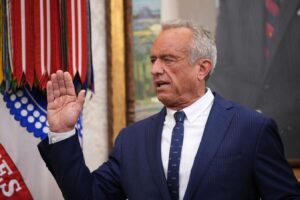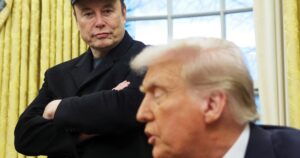https://news.mongabay.com/2024/09/at-climate-week-and-beyond-investing-in-community-conservation-pays-big-dividends-commentary/
- As representatives of NGOs, governments and funding organizations gather in New York City this week for the UN General Assembly and Climate Week to seek climate solutions, they should be looking at community conservation projects, too, a new op-ed says.
- Such projects offer big benefits for people and wildlife, in addition to the climate, yet it typically receives a mere fraction of the funds directed at other solutions.
- “In a world where natural climate solutions can provide 30% of needed global carbon reductions, we ask that they don’t just look for shiny, new and innovative ideas, but instead take a good hard look at the solutions that are already working and that just need more support and funding to help them grow and thrive.”
- This article is a commentary. The views expressed are those of the author, not necessarily Mongabay.
How do you secure the future of one of Africa’s most endangered large mammals, a species with only an estimated 3,000 remaining in the wild? You protect its habitat – its water resources, grasslands, and birthing areas. But because so many of these animals – like the Grevy’s Zebra – depend on lands outside of formalized protected areas, you find that at the heart of their survival lie the communities who live alongside them. In these areas, which are in both drought and flood-prone northern Kenya, the organizations rising to meet the challenges of the day are not just working with local communities, they are the local community. And they are tackling one of the toughest issues we face today: climate change.
The Grevy’s Zebra Trust is a prime example of how community-led conservation is an effective approach to not just biodiversity conservation but to so much more. It is a beautiful story of culture, of wildlife, women, governance, restoration, climate adaptation, of protecting and growing carbon sinks. Yet somehow this impactful, holistic approach to conservation doesn’t get nearly the credit – or the resources – it deserves.
Perhaps this is because these solutions and approaches are not really new or cutting-edge. In Africa, both Indigenous and local communities have long been stewarding and managing nature, yet the conservation field has not always recognized their role. This local stewardship is what ensures a fisherwoman can catch enough fish to feed her family for the week having patiently participated in a seasonal fishery closure managed by her community. It is the local forest co-op making decisions on replanting trees and firewood use; or elders using indigenous knowledge to make grazing plans for livestock and wildlife to thrive on healthy grass and abundant drinking water.

In Africa, 62% of people living in rural areas depend on natural resources to support their daily lives, so they are committed to stewarding their lands and resources. Seeding Solutions, a report my organization recently published, documents and celebrates the clear gains made by the community-led conservation movement across Africa, with climate, biodiversity, sustainable development, and social justice outcomes being met simultaneously. The report makes the case that as organizations like the Grevy’s Zebra Trust advance these solutions at a local level, it not only benefits the people in northern Kenya, but it benefits everyone around the globe.
Despite the important solution that community-led conservation offers for people, wildlife, and our climate, it receives a mere fraction of the funds it needs to achieve even greater impact. Globally, initiatives led by Indigenous and local communities receive less than 1% of global climate funding, while local conservation organizations in Africa receive less than 10% of philanthropic funding invested on the continent. If we are honest about investing in solutions that work, this must change.
Governments, practitioners, and funders are now gathering in New York City for the UN General Assembly and Climate Week NYC to seek out solutions that can help people and our planet. In a world where natural climate solutions can provide 30% of needed global carbon reductions, we ask that they don’t just look for shiny, new and innovative ideas, but instead take a good hard look at the solutions that are already working and that just need more support and funding to help them grow and thrive. Africa’s community-led conservation movement is not new, but we believe now is its time.
Resson Kentai Duff is the Portfolio Funding Director at Maliasili, where she works to raise both the funding and influence of local conservation organizations across Africa.
Banner image: Grevy’s zebras in Samburu Reserve, Kenya. Photo courtesy of Dan Lundberg.
Related audio from Mongabay’s podcast: Indigenous communities are key to conservation, a conversation with National Geographic photographer Kiliii Yuyan, listen here:
See related coverage of community conservation:
Why the Maxakali people are calling on their spirits to recover the Atlantic Forest
As logging intensifies forest fires, Wet’suwet’en fight to protect old growth

















